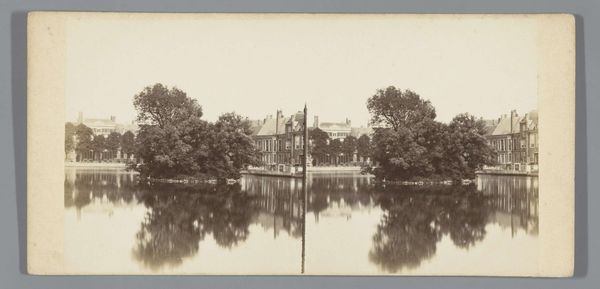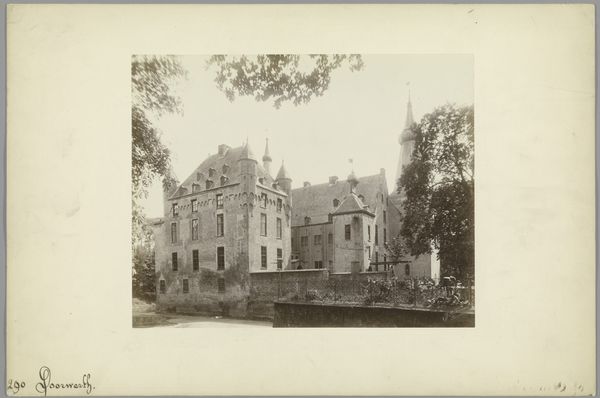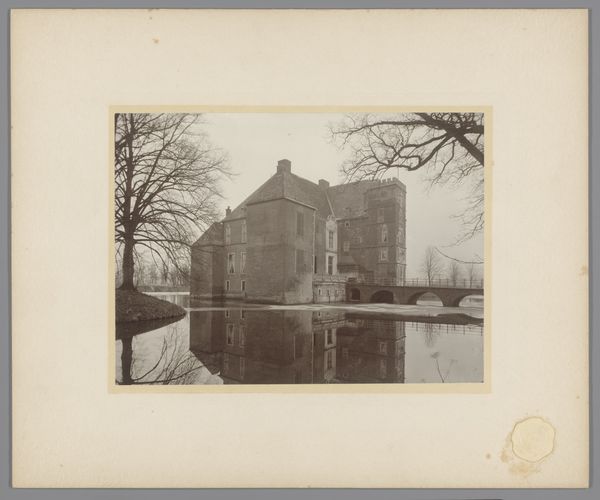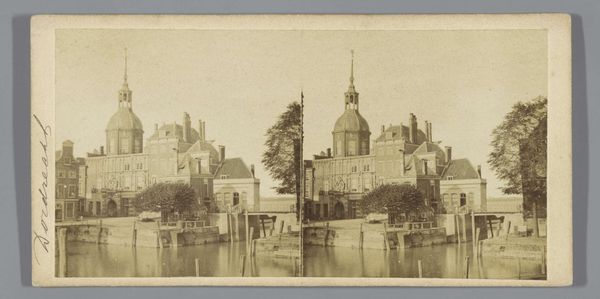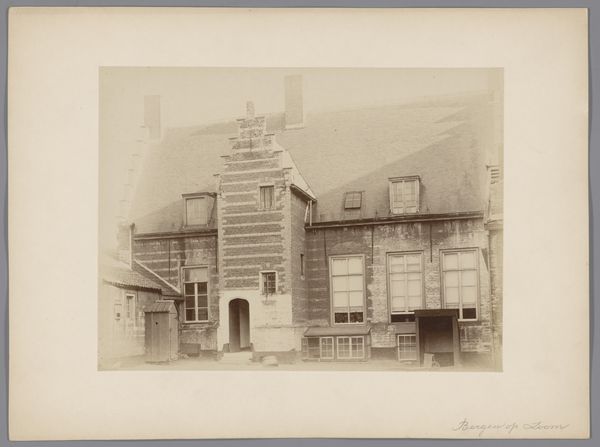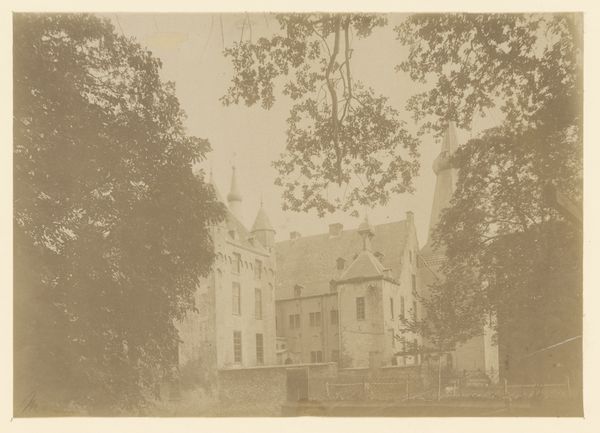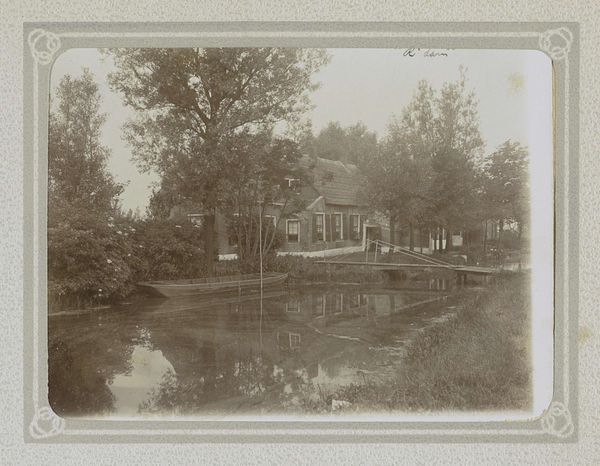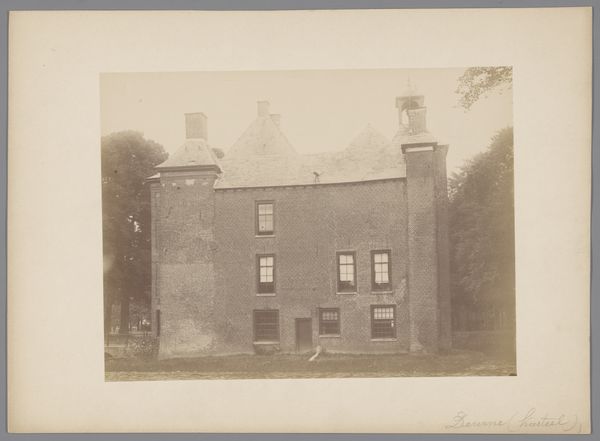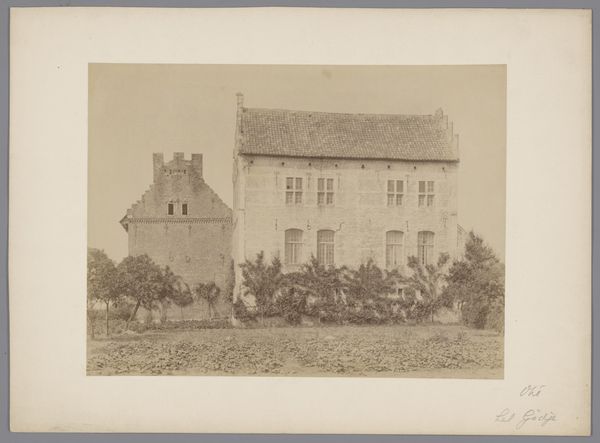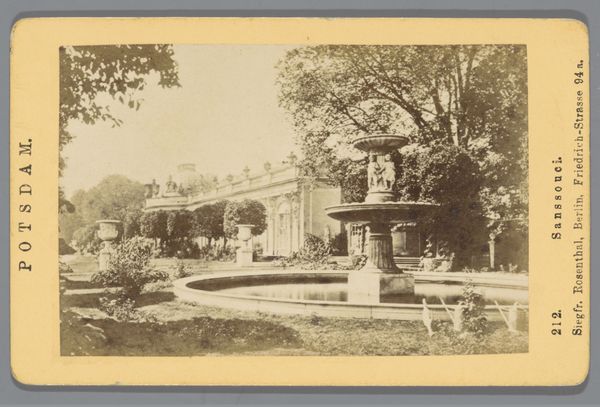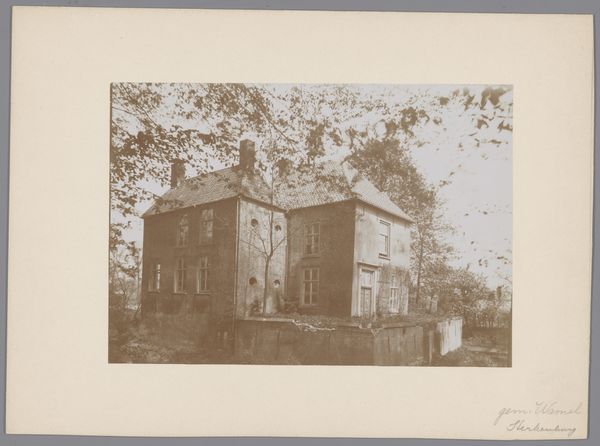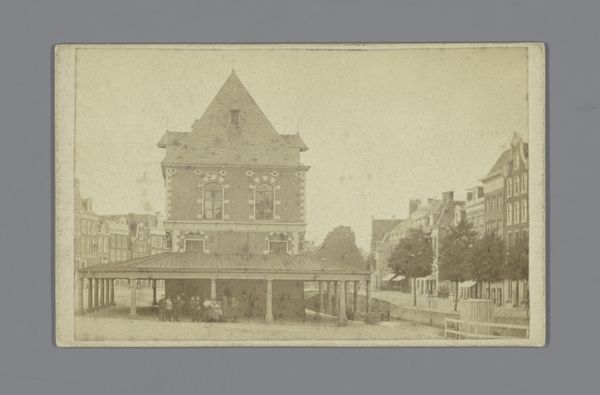
Exterieur van het Château de la Morinière te Mur-de-Sologne, gezien vanaf de zijkant c. 1875 - 1900
0:00
0:00
print, photography
# print
#
landscape
#
photography
#
cityscape
Dimensions: height 250 mm, width 353 mm
Copyright: Rijks Museum: Open Domain
Curator: This photograph, "Exterior of the Château de la Morinière at Mur-de-Sologne, Seen from the Side," is attributed to Médéric Mieusement, dating roughly between 1875 and 1900. The print captures a French château, seemingly adrift in time, now residing in the Rijksmuseum's collection. Editor: It looks like a dream—a sleepy, sepia-toned daydream. I’m struck by the stillness, the way the château sits almost passively in the water, like an ancient secret holding its breath. Curator: That "sleepy" quality resonates with the history of such estates in France, often symbols of aristocratic power disconnected from the lives of the broader population. Notice how the body of water surrounding the chateau might have historically served as a protective barrier. What implications of isolation and insularity can we infer from that? Editor: Oh, definitely a fortress mentality. It’s romantic, yes, but that water speaks of division. It sets the Château apart, both physically and, you're right, socio-politically. And the bridge almost taunts you—'you can look, but can you enter?’ Curator: Absolutely. Now, Mieusement’s choice of photography, a relatively new medium at the time, is fascinating. Was he attempting to document, to idealize, or perhaps both? Early photography, unlike painting, offered a seemingly objective eye. Editor: Perhaps trying to freeze a dying world. The soft focus gives it a wistful air, as if he's documenting a place already slipping into the past. The composition, too—placing that blocky tower so prominently feels deliberate. It almost acts as a barrier in itself. Curator: It does, doesn't it? As if safeguarding the delicate architectural details behind it. It reminds us that access, visual or physical, to these historical narratives has always been mediated. We only see what the artist, or in this case, the photographer, allows us to see. Editor: So true. Seeing it this way, I feel a bit melancholic about lost eras and restricted narratives—about how our relationship to history is mediated by images. But it does stir something. Thanks for guiding my gaze through this. Curator: My pleasure! Considering that it also prompted those exact ruminations for myself, I believe that is a clear indication of an artwork's evocative strength.
Comments
No comments
Be the first to comment and join the conversation on the ultimate creative platform.
